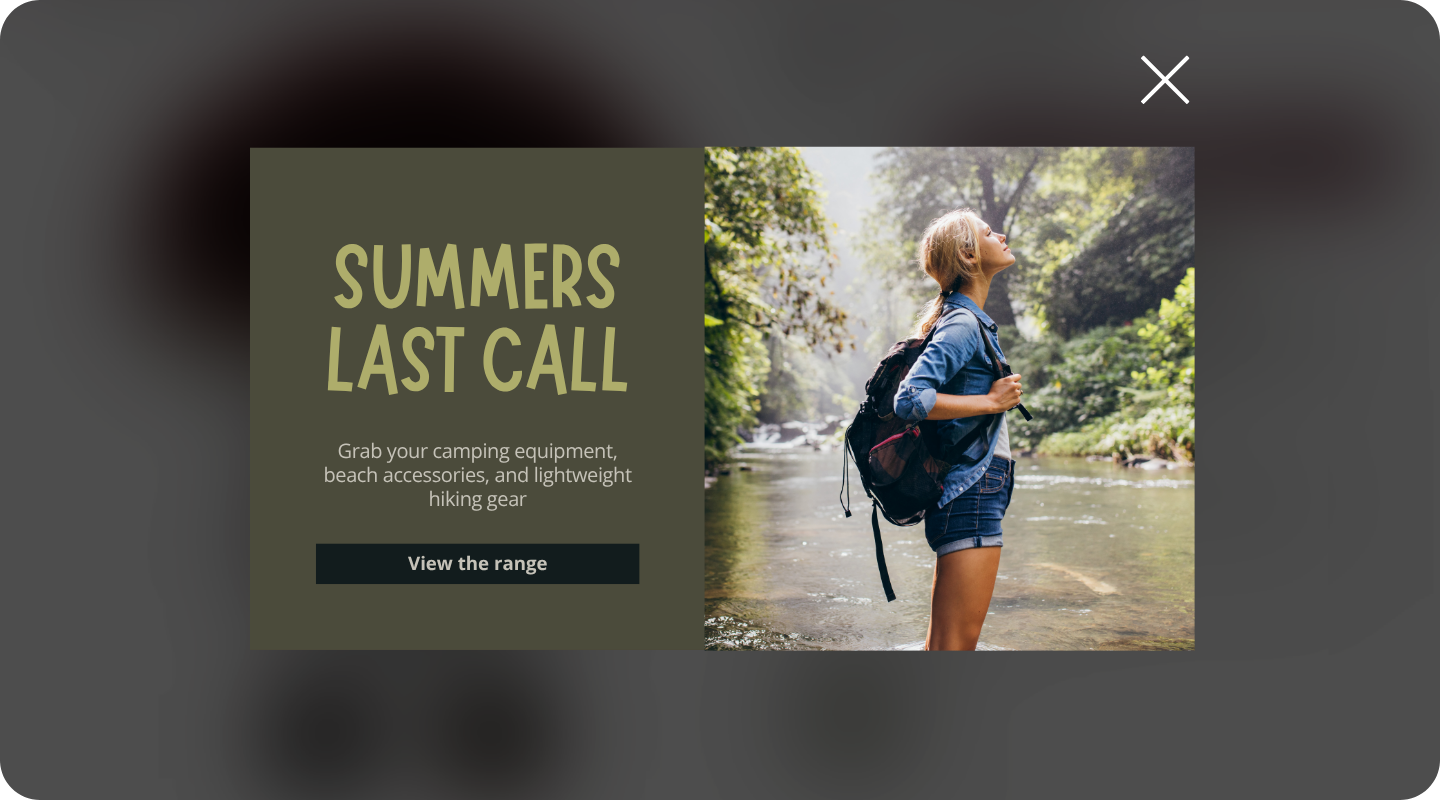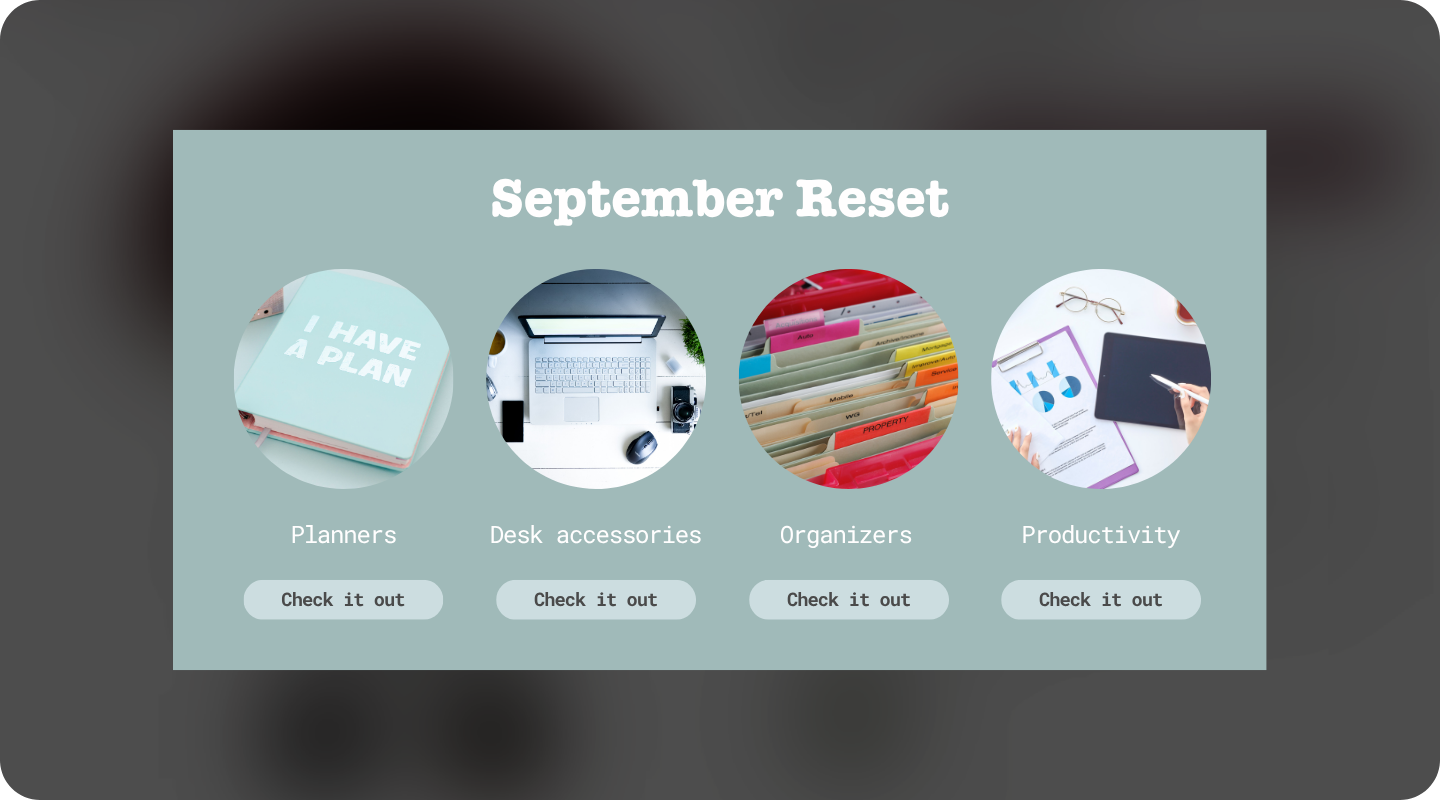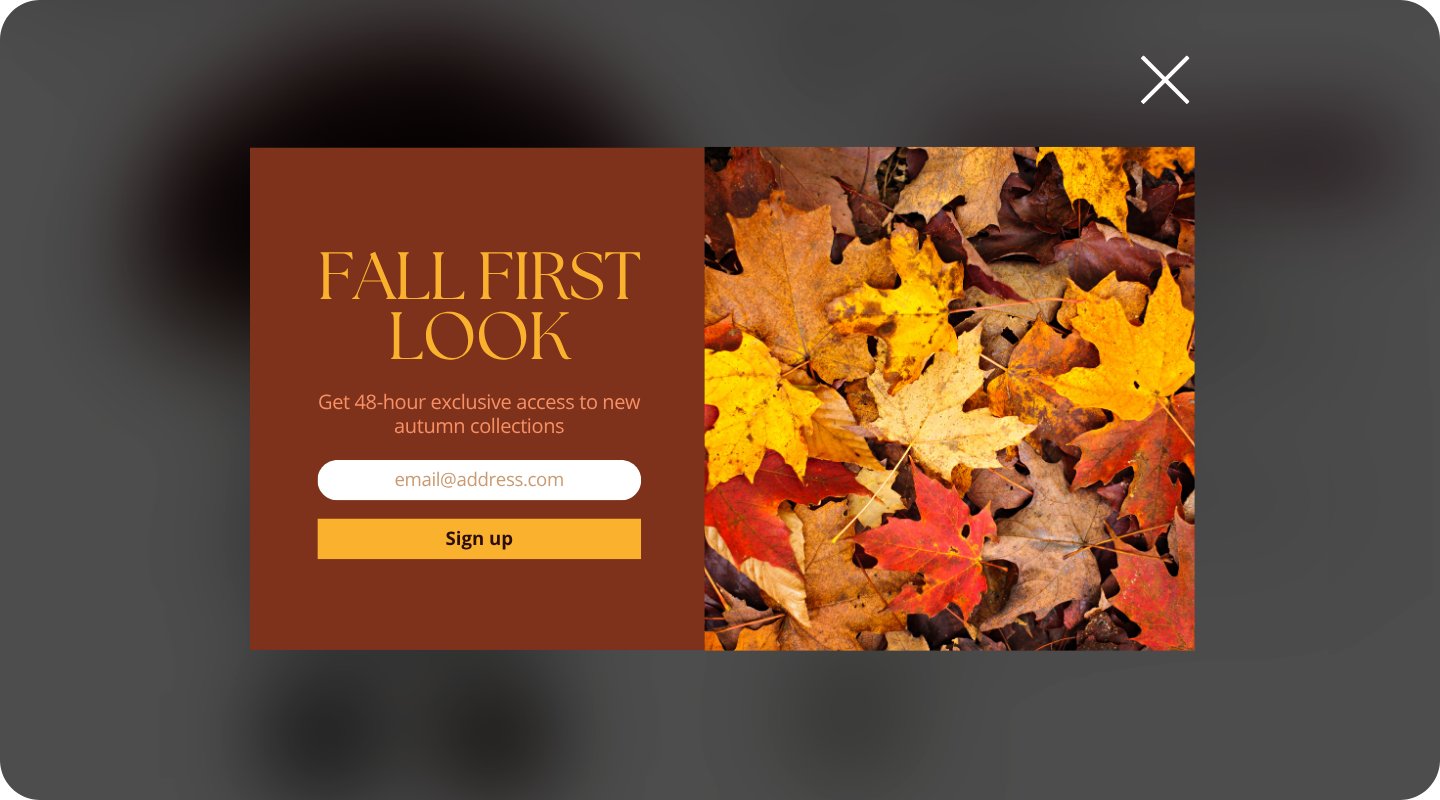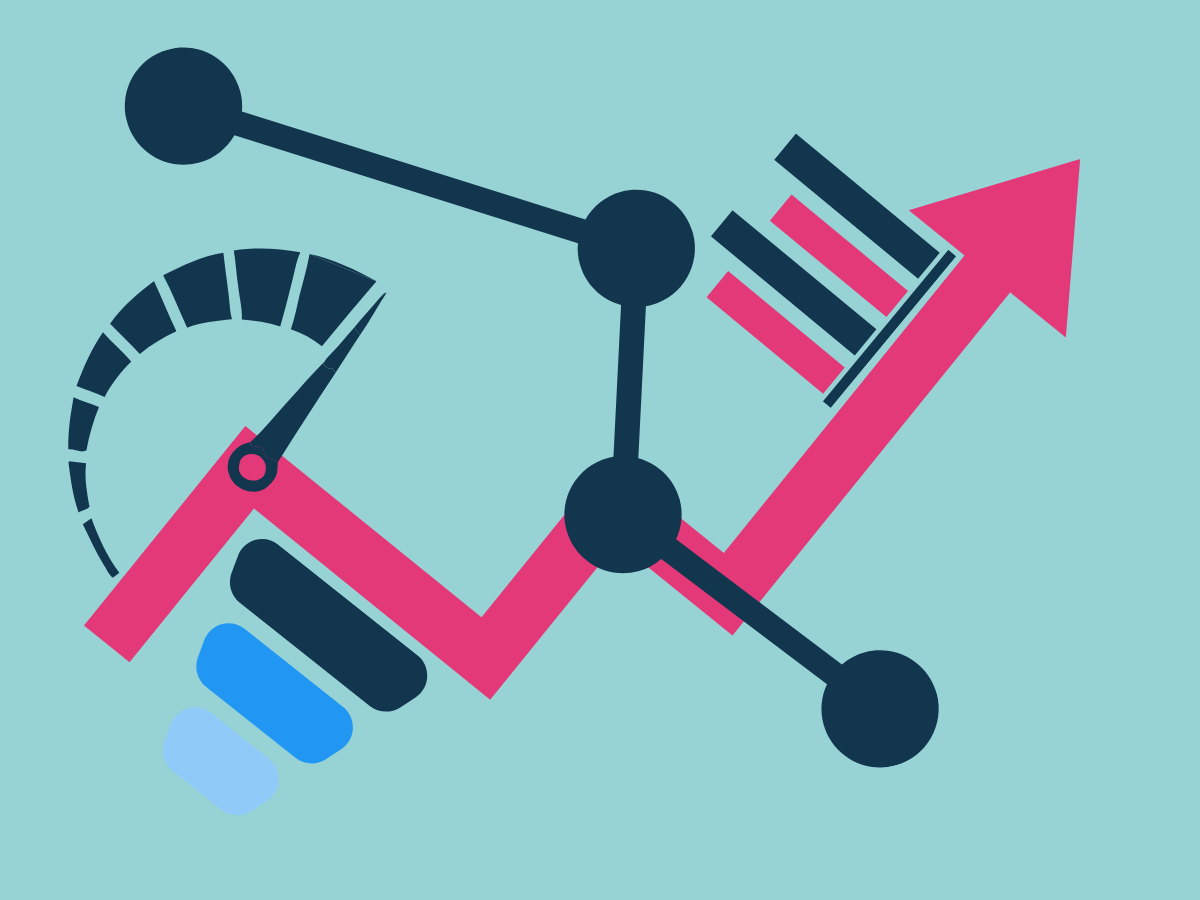Labor Day eCommerce: Red, white, and blue can drive conversions for you

Is your Labor Day campaign just Memorial Day with different colors?
Are you celebrating workers or just hoping people forget summer is ending?
Do your customers even care about Labor Day, or are they already thinking about fall?
That last question matters more than you think.
The Labor Day reality check
Most retailers approach Labor Day like every other holiday: with red, white, and blue banners, generic "celebrate workers" messaging, and the same tired 20% off sitewide discount. Then, they wonder why conversions stay flat.
The problem isn't your discount percentage. It's your fundamental misunderstanding of what Labor Day represents to customers.
Labor Day isn't about patriotism. It's about transition: summer ending, routines resuming, and the psychological shift from vacation mode to productivity mode.
Innovative eCommerce CRO strategies recognize this shift and optimize conversions around customer intent, not calendar dates.
What works:
- End-of-summer inventory clearing with urgency-driven personalization.
- Back-to-work preparation campaigns targeting specific customer segments.
- Fall transition messaging that acknowledges seasonal psychology.
- Strategic timing that maximizes the three-day weekend shopping behavior.
Generic holiday promotions generate average results because they ignore customer motivations.
Campaign strategy 1: The summer farewell clearance
The concept is simple. Summer inventory must go, and customers need closure.
This isn't about Labor Day patriotism. It's about inventory management with a psychological deadline. Research by Impact shows that conversion rates rose 23% with Cyber Week's deadline in 2024.
Your eCommerce platforms should segment summer inventory automatically. Create dedicated clearance sections with countdown timers showing days until fall collections arrive. Use exit-intent overlays in shopping cart flows to capture hesitant browsers with "last chance" messaging.

Optimization tactics:
Bundle slower-moving summer items with popular pieces to increase average order value. Use email automation to target customers who viewed summer products but didn't purchase. Implement dynamic pricing that increases discounts as inventory levels drop. Create urgency with real inventory counts: "Only three left in your size."
This approach solves two problems simultaneously. Customers get deals on items they want (summer gear at summer's end). You clear inventory before it becomes dead weight.
Campaign strategy 2: Back-to-routine preparation
Labor Day psychology is powerful. After months of relaxed summer routines, people crave structure. They want to get organized, reset their habits, and prepare for productive fall schedules.
Your customer experience should reflect this mindset shift—target segments based on previous purchase behavior and browsing patterns. Office workers need wardrobe refreshes. Parents want organizational tools. Students require productivity upgrades.

Personalization opportunities:
- Email campaigns targeting customers who bought work clothes, office supplies, or organizational products in previous years.
- Dynamic product recommendations based on browsing history during the summer months.
- Abandoned cart recovery emails with "get ready for fall" messaging.
- Retargeting ads focusing on productivity and organization themes.
The key is matching promotions to customer intent. Don't offer random discounts; instead, offer relevant solutions to seasonal transitions.
Campaign strategy 3: Fall preview exclusivity
Fashion-forward customers don't want summer clearance. They want first access to what's coming next.
Create tiered access campaigns. Email subscribers get preview access on Friday, social media followers get early access on Saturday, and the general public gets access on Monday. This approach drives conversions through exclusivity rather than just price reduction.
Exclusive preview campaigns generate higher customer lifetime value than standard promotional approaches.

Technical implementation:
- Segment email lists by engagement level and purchase history.
- Use dynamic content to show different offers based on customer segments.
- Implement inventory controls to maintain exclusivity perception.
- Create waiting list functionality for high-demand preview items.
This strategy increases revenue per customer while building stronger relationships with your most engaged audience.
Campaign strategy 4: Three-day weekend optimization
Most retailers launch Labor Day campaigns and hope for the best. Savvy retailers understand weekend shopping patterns and optimize accordingly.
Friday captures early planners. Saturday drives peak traffic. Sunday maintains momentum. Monday creates final urgency. Tuesday recovers abandoned carts.
Each day requires different messaging and offers. Friday focuses on preview access, Saturday emphasizes broad appeal, Sunday maintains momentum with social proof, and Monday creates scarcity-driven urgency.
Daily optimization approach:
- Friday: Early access for email subscribers with moderate discounts.
- Saturday: Public launch with standard promotional offers and social sharing incentives.
- Sunday: Social proof emphasis showing purchase activity and customer reviews.
- Monday: Enhanced final-day offers with countdown timers and inventory warnings.
- Tuesday: Recovery campaigns targeting cart abandoners with "you missed it" messaging that leads to alternative offers.
This approach maximizes conversion opportunities across the extended weekend rather than relying on single-day performance.
What drives Labor Day conversions
Forget patriotic themes. Focus on psychological transitions.
The end of summer creates urgency around seasonal purchases. Routine resumption drives practical needs, and the three-day weekend provides extended decision-making time.
Your eCommerce CRO strategy should align with these psychological triggers. Use countdown timers showing the days until the season changes. Highlight the practical benefits of products for fall routines. Create urgency around limited inventory or time-sensitive offers.
Conversion optimization tactics:
We have a mobile-first design since weekend shopping skews heavily mobile. We have simplified checkout processes to reduce abandonment during impulse purchases. We also have exit-intent overlays with relevant offers based on browsing behavior and live chat support for higher-value purchases during weekend hours.
Managing inventory and promotion spend
Labor Day campaigns should solve inventory problems, not create them.
Analyze your summer inventory levels. Identify slow-moving products. Calculate optimal discount levels to clear inventory without sacrificing too much margin. Use dynamic promotions that adjust based on real-time inventory data.
Smart retailers use Labor Day to strategically transition inventory. They clear summer stock to make room for fall merchandise, test demand for new products with preview campaigns, and optimize promotion spend by targeting segments most likely to convert.
Financial optimization:
- Set inventory turnover targets for summer merchandise.
- Calculate customer acquisition costs for different promotional levels.
- Track the margin impact of various discount tiers.
- Monitor the lifetime value of customers acquired during promotional periods.
The goal isn't maximum revenue. Its profitable growth is achieved through strategic inventory management and customer acquisition.
Implementation timeline for maximum impact
Two weeks before Labor Day, analyze inventory and segment customers. One week before, finalize campaigns and test mobile experiences. During the weekend, monitor performance and adjust tactics based on real-time data.
Pre-campaign preparation:
- Inventory analysis and pricing strategy development.
- Customer segmentation based on previous purchase behavior.
- Email sequence creation with A/B testing for subject lines and content.
- Mobile checkout optimization and testing.
Weekend execution:
- Real-time performance monitoring with hourly conversion tracking.
- Dynamic promotion adjustments based on inventory levels and demand.
- Customer service preparation for increased inquiry volume.
- Social media engagement to amplify organic reach.
Post-campaign analysis:
Conversion rate analysis by customer segment and traffic source. Inventory turnover assessment and remaining stock evaluation. Customer acquisition cost calculation and lifetime value projection. Performance comparison with previous holiday campaigns
Success metrics extend beyond immediate revenue. Track inventory turnover, customer acquisition costs, and engagement rates for comprehensive performance assessment.
The bottom line on Labor Day campaigns
Labor Day campaigns work when they solve actual customer problems.
End-of-summer inventory issues? That's a problem worth solving. Back-to-work preparation needs? That's valuable customer service. Generic holiday messaging? That's not a problem anyone asked you to solve.
Focus on customer psychology, not calendar patriotism. Optimize for mobile shopping behavior. Use data to drive decisions rather than assumptions about holiday sentiment.
Most retailers will still default to red, white, and blue promotions (they always do). Your opportunity lies in understanding what customers want during this transition period.
A smart eCommerce CRO isn't about following holiday playbooks. It's about recognizing customer intent and optimizing conversions based on real motivations.
Retailers who understand this distinction will capture customers tired of generic holiday marketing.
Everyone else can fight over the scraps.






